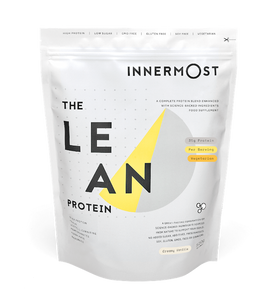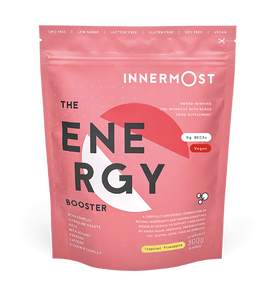The latest guidance around genetically modified foods and genetically modified food laws are changing. Farming regulations have been eased, and this means that costs of production and rules around the creation of genetically modified foods have been altered to make the production of these foods easier… and this has major implications for the food market.
So far, the relaxation of these rules and regulations only relates to England, but it’s rumoured that these changes are not far behind for the rest of the United Kingdom.
Genetically modified food laws in the United Kingdom
With the recent announcement of the relaxation of genetically modified food laws in England, here at Innermost, we felt it was important to dive into the facts, gain all the information and evaluate what this means for our food produce in the United Kingdom and on our supermarket shelves.
These changes have sparked wide-spread debate and discussion around the pros and cons and genetically modified foods, so as a brand that produces our products with non-genetically modified ingredients, our interest in the progression of genetically modified food laws and the pros and cons of genetically modified foods is a key priority.
First, let’s get the basics out of the way. What are genetically modified foods, what are the current genetically modified food laws in the UK, and how are they changing?
Here we go…
What are genetically modified foods?
Genetically modified foods are foods that have been defined as those that have had their genetic material (aka, their DNA) altered in a way that natural development would not include. This modification is commonly achieved through the addition of genetic information from another organism (simply, another living thing) and can have drastic consequences for the production and longevity of food products such as fruits and vegetables.
What does this mean for food production?
Genetically modified foods can lead to greater quantities of production and a reduction in food prices. Not only this, but genetic modification can lead to a greater reliability of high-quality food produce due to the decrease in risk from disease. Winning!
The story so far: genetically modified food laws in the United Kingdom
The current (pre-relaxed) rules and regulations around genetically modified foods in the United Kingdom are pretty complex, we’re not going to lie.
Broken down simply, though, the laws state that any genetically modified foods cannot be farmed without prior approval from regulatory agencies such as The Department for Environment, Food and Rural Affairs (or DEFRA, for short). It’s not easy to be approved, either, as since 1992, only 2024 applications have been approved. And after this, any foods that have been approved, that may contain a genetically modified organism (or, as it’s often abbreviated to, a GMO), must be accompanied by written documentation. Not to mention, this process is incredibly expensive, with a £5,000 application fee.
As the rules currently stand, thousands of crops have to be thrown away due to their susception to disease such as Blight’s Disease. Whilst genetic modification could easily eradicate this issue and bring thousands more crops to our supermarket shelves, the rules around this method make it so that these foods go unapproved. And therefore, to waste.
The proposed genetically modified food law change
Whilst a change to these rules looks to be tricky, it’s doable. Scientists are backing the change, with reports stating that a relaxation of these rules would be a welcome change from EU laws, and allow greater, healthier production of crops for our consumption. This change would allow production of GMO foods to be in line with our American counterparts.
The pros and cons of genetically modified foods
To many, the ideology of genetically modified foods is hailed as fantastic scientific advancement. With the ground-breaking growth in technology that allows us to create a surplus of food to consumers at a low cost, high-yield outcome, many would argue, “why wouldn’t we take advantage of these abilities?”
We could go on all day about this debate, but to sum up years of back-and-forth between scientists, farmers, the law and everyday consumers, here’s some of the main arguments towards integrating genetically modified foods into our lives.
The pros of genetically modified foods
- Reduced use of potentially harmful pesticides
- The creation of drought-resistant foods
- Accelerated growth speed
- Better tasting food
- Less food waste
- Longer shelf life for food
Now, looking at the above list, you’re wondering how anyone can object to the introduction of genetically modified foods. Lower food prices, greater taste, a drop in food waste and a longer shelf life? Sign me up!
Well, not everyone feels that way…
The cons of genetically modified foods
- The potential of allergic reactions
- Genetic modification is a relatively new process
- The potential for resistance against illness
- Could lead to the production of harmful toxin
- Potential loss of nutritional value
Summary
In light of this proposed relaxation, we thought it was important to mention that all of our products are non-genetically modified, as we prioritise natural, effective ingredients. More information around genetically modified food laws and the current changes are a hot topic at the moment, and something we are keeping a close eye on here at Innermost. We’re big believers in trusting the science. It’s something we’ve always done, are doing, and will continue to do, and keeping you (and ourselves) in the loop when it comes to big changes like this is something we feel super strongly about.


















